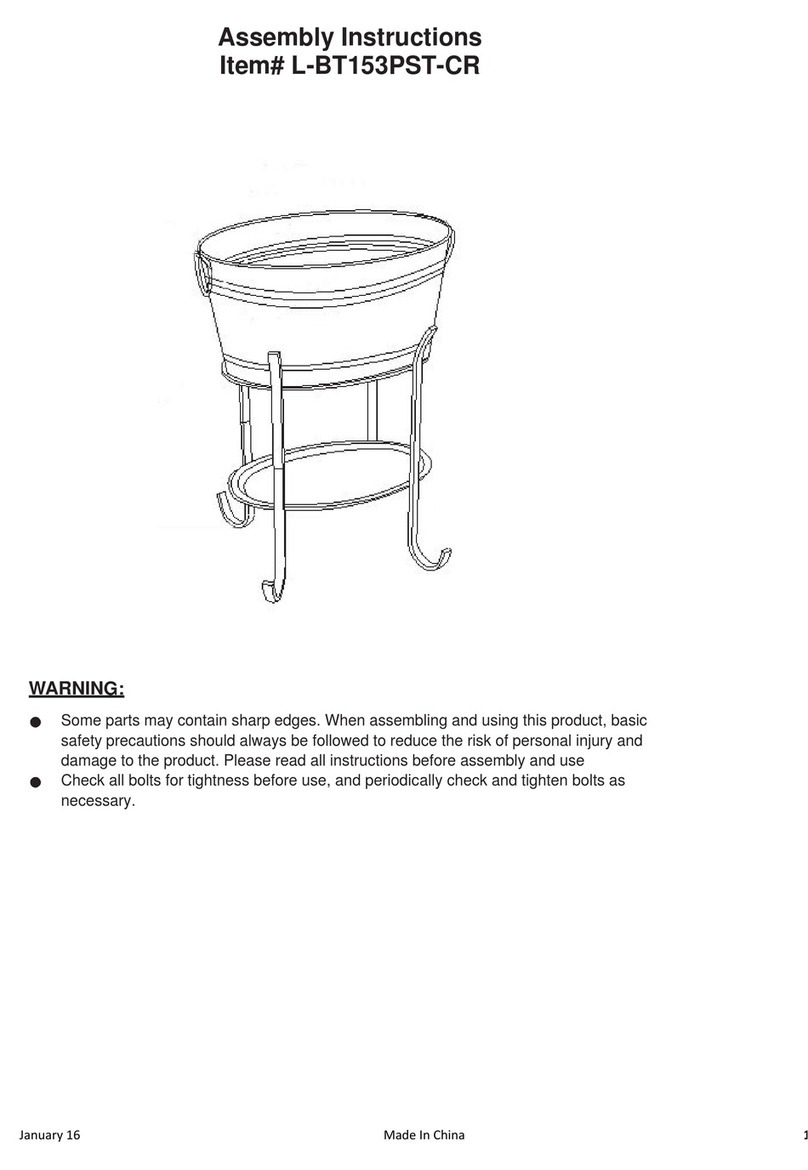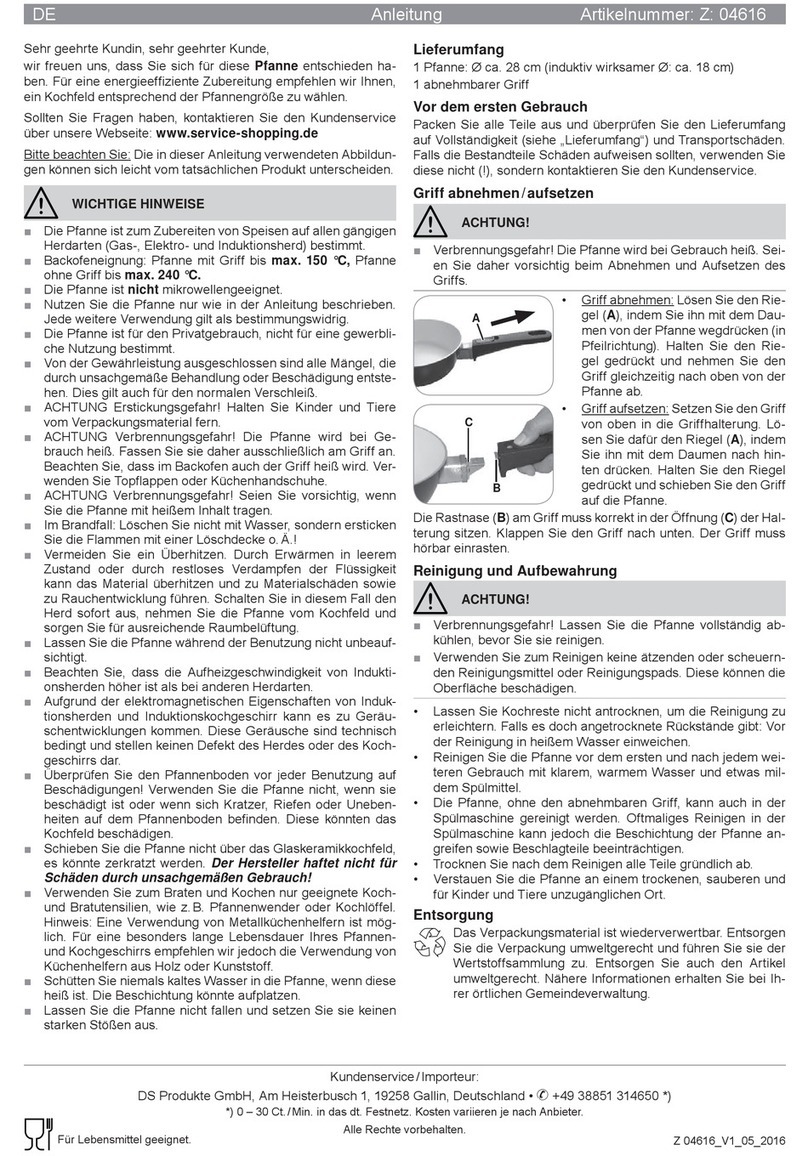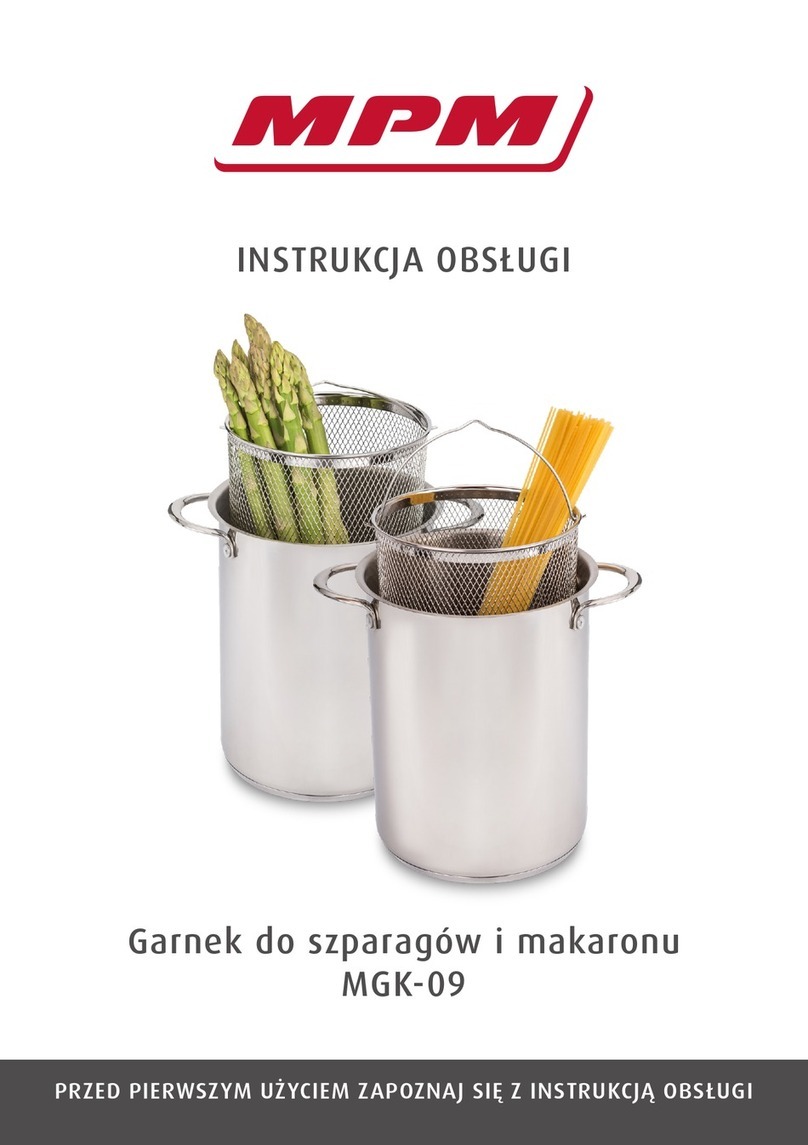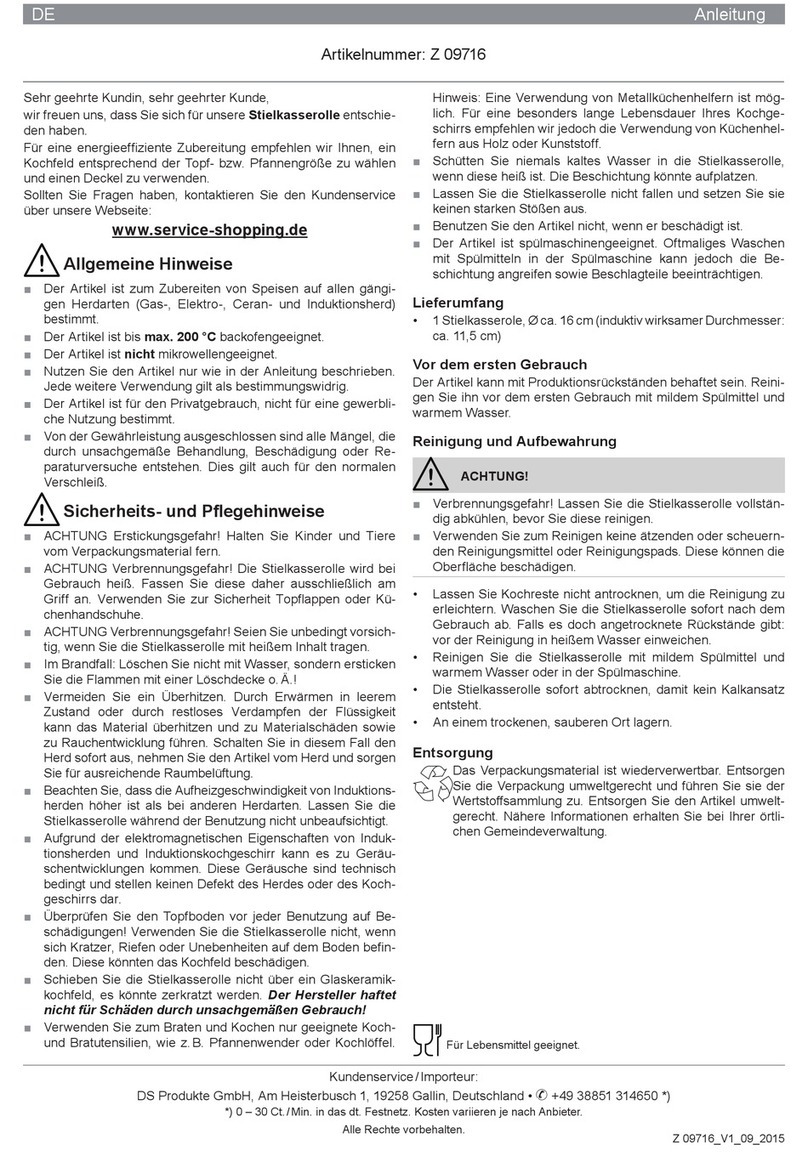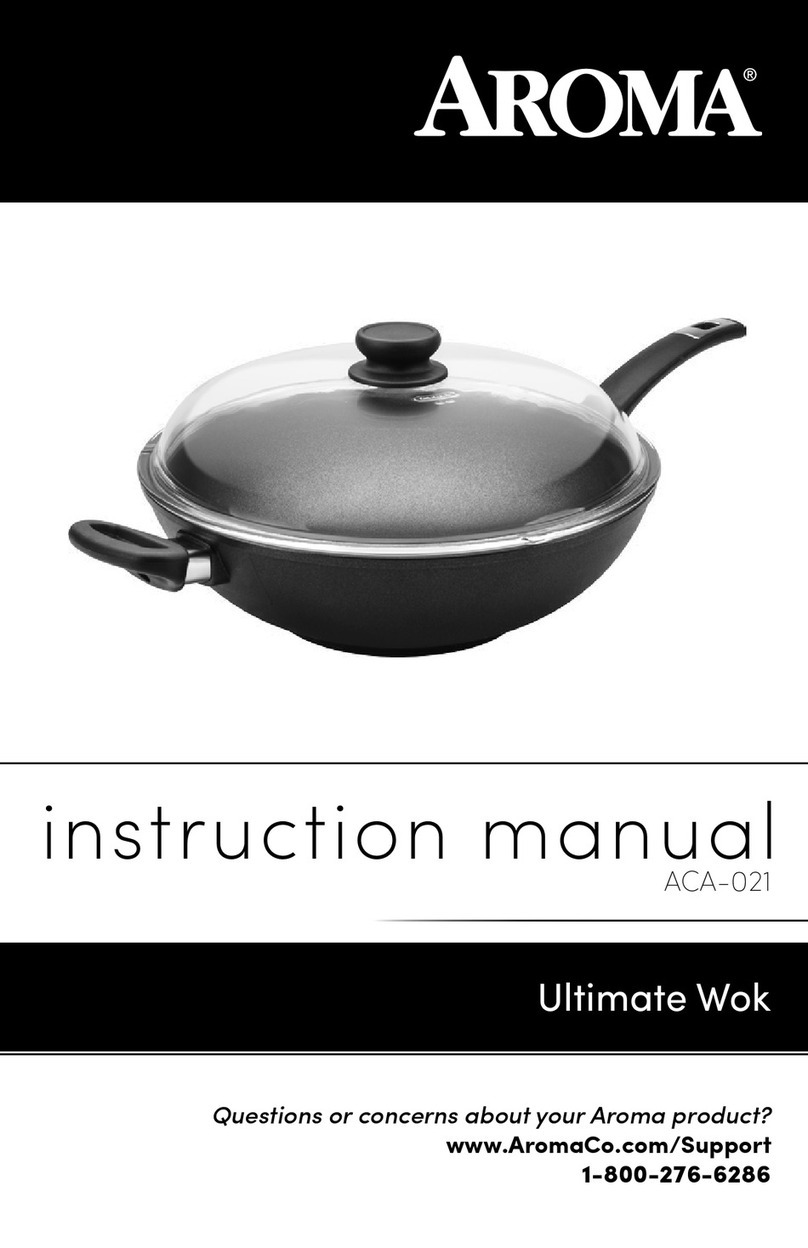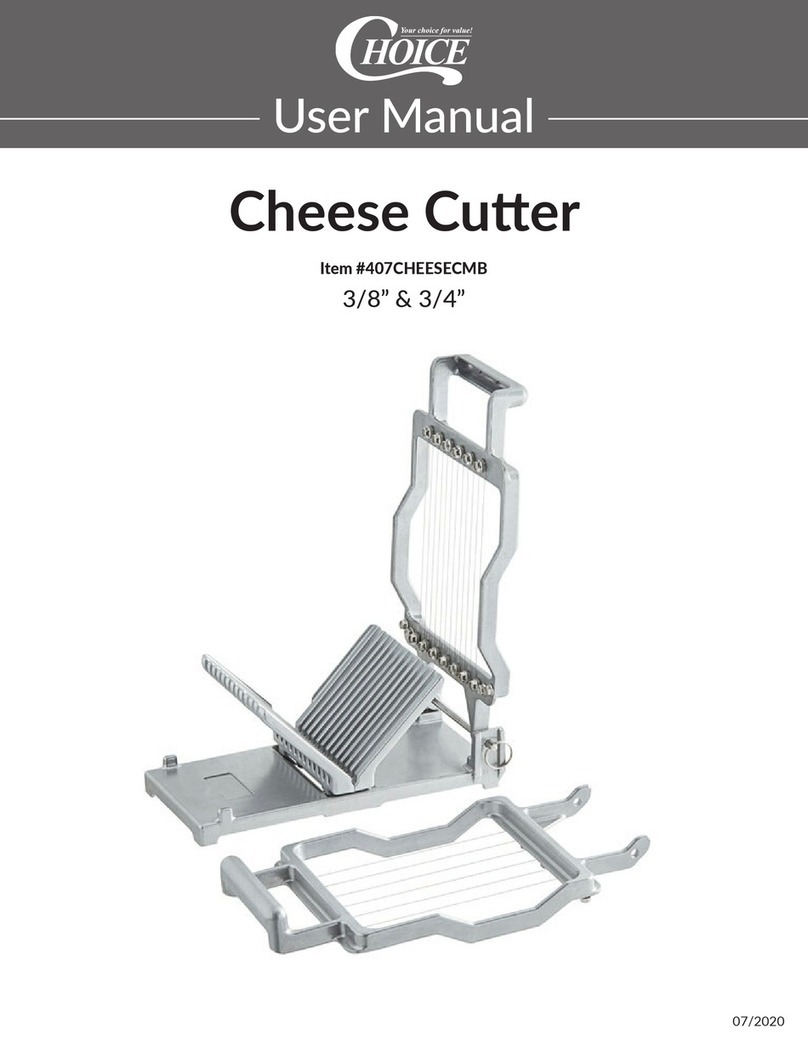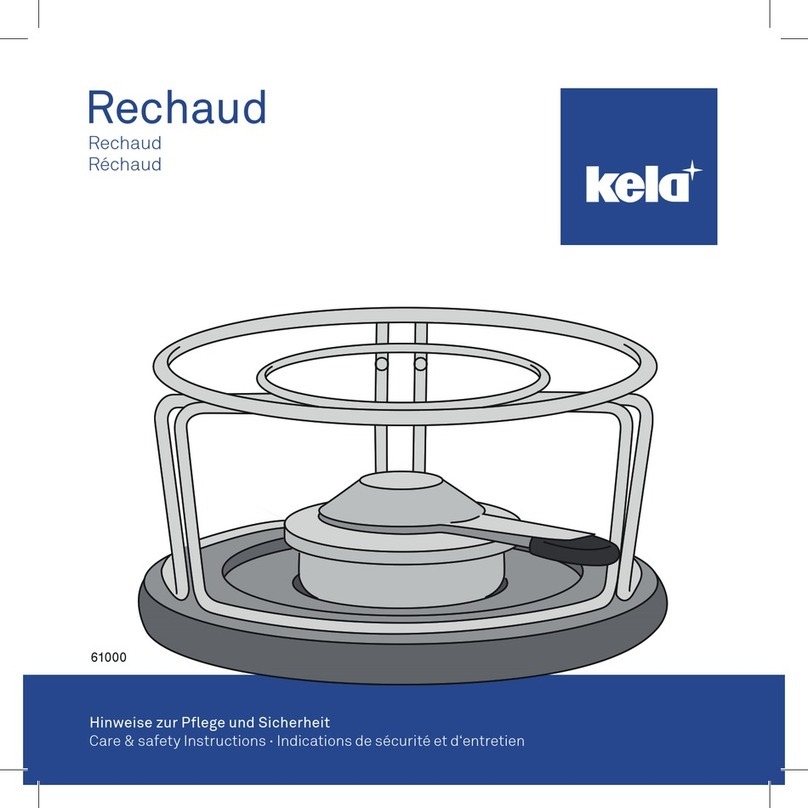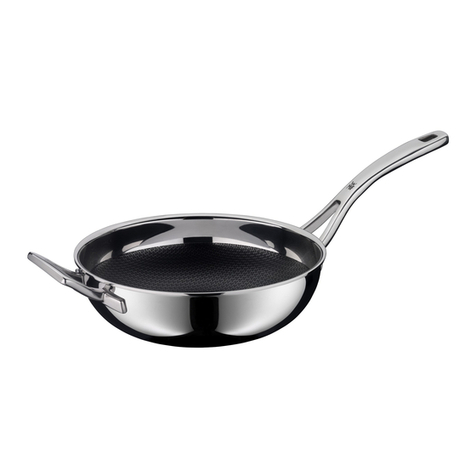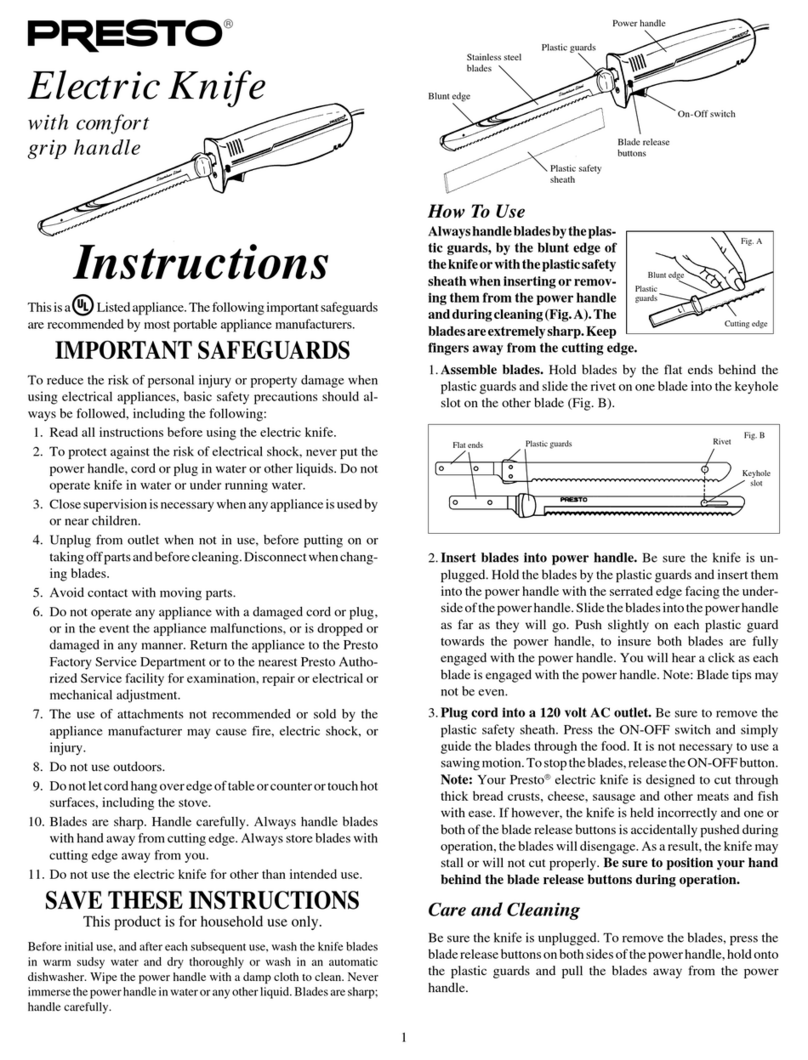Go Fermentor GOfermentor Jr User manual

Professional winemaking for the serious enthusiast and microvinification researcher. Make
wine using real grapes instead of juice for award-winning results. Advanced technology
eliminates all the mess and cleaning. Completely self-contained. Does not require a press.
GOFERMENTOR JR OPERATING MANUAL

CONTENTS
WHAT IS THE GOFERMENTOR? .....................................................................................................................................4
GOFERMENTOR JR.........................................................................................................................................................4
COMPONENTS ...........................................................................................................................................................4
OPTIONAL ..................................................................................................................................................................4
DISPOSABLES .............................................................................................................................................................4
YOU WILL NEED TO PROVIDE.....................................................................................................................................4
INITIAL EQUIPMENT SETUP .......................................................................................................................................5
RED WINE FERMENTATION .........................................................................................................................................12
PUNCHING ...............................................................................................................................................................12
SAMPLING................................................................................................................................................................15
PRESSING out the wine............................................................................................................................................16
DEFLATION...............................................................................................................................................................20
AGING AND RACKING ..............................................................................................................................................21
WHITE WINE FERMENTATION .....................................................................................................................................22
PREPARATION..........................................................................................................................................................22
PRESSING out the juice............................................................................................................................................22
FERMENTATION.......................................................................................................................................................24
APPENDIX 1 operating the controls.............................................................................................................................25
APPENDIX 2 Controller configuration..........................................................................................................................37
APPENDIX 3 SPECIFICATIONS.......................................................................................................................................40
APPENDIX 4 SOURCES..................................................................................................................................................42
APPENDIX 5 troubleshooting and faq..........................................................................................................................44
APPENDIX 6 Warranty, support, Liability, and Returns Policy.....................................................................................49
APPENDIX 7 terms and conditions of sale ...................................................................................................................50

4
WHAT IS THE GOFERMENTOR?
The GOfermentor, developed in 2014, is a revolutionary device for winemaking. Traditional winemaking
fermentors have changed little in the last 500 years - the only major change being the move from open wood vats
to temperature controlled stainless-steel tanks. The GOfermentor brings 21st century technology, developed
originally for the manufacture of pharmaceuticals, to modern winemaking. This technology dramatically reduces
the capital and operating cost for a winery. No significant installation is necessary –a fermentation system can be
set up within minutes in any suitable room. No cleaning is required which dramatically reduces labor
requirements. No waste water treatment is needed as the process uses essentially no wash water. And, finally, the
GOfermentor provides better control of fermentation parameters, minimal exposure to air, automated punch and
built-in press. You can read about it on our website www.GOfermentor JR.com.
GOFERMENTOR JR
The GOfermentor JR is the home version of our revolutionary winemaking technology. The GOfermentor is used
for commercial wineries with an operating capacity of up to 1 ton grapes per batch. The GOfermentor JR uses the
same technology, but in a compact inexpensive format with a capacity up to 110lb grapes (5 to 7 gallons of wine).
COMPONENTS
The following components are included (see Appendix 2 for details):
1. Electronic controller with power cord.
2. Perforated sampling /pressing tube with pressure relief cap
3. Segmented 2inch TriClamp and gasket
4. Black reusable rubber inflatable bellows (3) with bottom plate
5. Harvest tubing with fitting
6. Inflation/deflation manifold tubing
7. 3x 3/8-inch hose crimps to connect bellows to inflation manifold
8. U-bolt clamp
9. 2-inch hose clamp to close fermentation liner
10. Plastic 30-gallon drum outer container with clear cover plate and clamp.
OPTIONAL
GOfermentor hand operated sampler
DISPOSABLES
GOliner JR single-use fermentation liners
YOU WILL NEED TO PROVIDE
Wine Grapes (50 to 110 lbs). Fresh or frozen.
Yeast and additives and some laboratory gear
Wine collection and aging vessels
Inexpensive wine transfer pump (essential for good press yields)
These can be obtained from various online suppliers. Some sources are provided in Appendix 4.

5
PUSH
INITIAL EQUIPMENT SETUP
Scan this QR code to see the setup video
SETTING UP
1. All components are shipped packed inside the blue plastic drum. Open the lid
clamp and remove the lid. Peel the protective film off both sides so it is clear.
Remove all the components inside.
2. Power up the controller and setup the WiFi connection (Appendix 1).
3. Place the 3 black reusable rubber bellows in the drum. The bottom of each
bellow has a grommet. There is a short length of string that connects this
grommet to the circular bottom plate. Verify that each of the three bellows
is secured to the bottom plate. Place the bottom plate inside the drum. With
the bellows inside, hook the inlet tube on each bellow into the
corresponding hole in the drum. Drape the top of each bellow over the edge
of the drum. This will make it easier to fill the fermentation liner.
4. Connect the circular plastic pressurization manifold tubing on the outside of
the drum to each of the 3 bellow inlet tubes as shown. The small hose crimps are necessary to prevent
the fitting from slipping off under pressure. A pliers should be used to compress. The crimps are reusable
and can be removed by using pliers to push sideways and separate the teeth.
5. Push the open end of the perforated metal tube into the plastic pressing tube head and secure with the
supplied 4mm hex key.
6. Place a new fermentation liner inside the rubber bellows. Drape the open end of the fermentation liner
over the lip of the drum. That’s it! You are now ready to fill the fermentation liner with grapes.

6
FILLING THE FERMENTOR LINER
Fill the fermentation liner with grapes. You can use crushed grapes, or whole destemmed grapes. Do not use
whole clusters. For white wines you can use juice. We do not recommend the use of grape concentrate for red
wine–after all –the purpose of the GOfermentor is to make real wine from real grapes, not bogus concentrates.
You can put in 50 to 110 lbs of grapes. You can crush the grapes in the liner by pounding them with a suitable tool
such as a 2x4. Or you can go use the punch mechanism as described later.
Now take a sample and measure pH etc. Make any nutrient additions or pH adjustments. You can mix these into
the must using a stirring paddle. If you are new to winemaking read some of the books in Appendix 3.
.
CLOSING THE LINER
Once the grapes and additions are in, twist the open end of the liner to seal it off. Use duct tape to hold it closed
and to protect the liner from accidental puncture from the hose clamp. Then, slip on the supplied hose clamp and
tighten securely. Put some duct tape over the hose clamp so it cannot puncture the liner.
IMPORTANT Use a ratcheting wrench or nut-
driver to securely tighten the hose, otherwise
you may have leakage.
IMPORTANT Put some duct type tape on top
of the hose clamp to make sure it does not
chafe and puncture the liner or bellows.
From now on all operations will be done
through the 2-inch TriClamp port on the liner.

7
CLOSE THE LID
1. Push the top edges of the rubber bellows towards the interior of the drum.
2. Place the clear lid on the drum. Make sure that the 2 inch top port protrudes through the central hole in
the lid:
3. Pull the liner port so that the liner port is flush with the lid, and secure using the U-bolt clamp so that it is
held up.
During fermentation, and especially during pressing, the system can
build up to 1 psig pressure. IT IS CRITICAL THAT THE LID IS FASTENED
SECURELY WITH THE DRUM CLAMP AS SHOWN:
Port on liner should
protrude through hole in lid
Pull port up and secure with
supplied U-clamp. This
prevents the liner from
falling down into the pail.

8
MAKE SURE THE CLAMP IS PLACED IN THE CORRECT ORIENTATION AND
THE LOCKING TAB MUST LOCK DOWNWARDS (OTHERWISE LID CLAMP
IS PLACED UPSIDE DOWN AND WILL NOT LOCK CORRECTLY). MAKE
SURE THE LOCKING TAB IS FULLY ENGAGED.
FAILURE TO SECURE THE CLAMP CORRECTLY
MAY CAUSE DAMAGE OR INJURY. WE ARE NOT
LIABLE FOR ANY DAMAGE OR PERSONAL
INJURY CAUSED BY THE FAILURE TO SECURE
THE LID CORRECTLY PER THESE INSTRUCTIONS.
If you have any questions about how to secure
the lid please contact us for assistance.
Clamp should be flush all around the drum edge
Handle should fold
against the drum edge
Locking tab rotates
downwards and locks

9
ATTACH THE SAMPLING/PRESSING TUBE
1. Put the rubber TriClamp gasket on the 2 inch port.
2. Insert the stainless-steel sampling/pressing tube though the port into the must.
3. Use the supplied stainless-steel TriClamp to secure the tube to the liner port.
4. Verify that the pressure relief valve is firmly screwed in to the side port of the sampling/pressing tube.
CONNECT THE CONTROL UNIT
1. Place the CONTROLLER on top of the drum lid.
2. Plug the end of the pressurization manifold tubing into the connector on the front panel of the controller.
You can release this plug later by pushing on the grey release button.
3. Plug the CONTROLLER in to any convenient 110 AC outlet. Press the on/off switch on the front panel to
turn it on. The screen should light up and go through an initialization sequence.
4. Read the CONTROLLER OPERATION section for details on how to set up and operate the CONTROLLER.
.
Push-in connector for
inflation manifold. Press
grey button to release
Power switch
Control screen with
3 push buttons
Rubber gasket
Pressure relief
port

10
GOFERMENTOR JR+
The GOfermentor JR+ is an advanced unit with the capability for temperature monitoring and control. The
press/sample tube has a temperature probe and coolant circulation coil. It can be used to control fermentation
temperature.
Plug the temperature probe cable on the press/sampling tube into the jack located on the front panel of the
GOfermentorJR+. Connect coolant lines to the control and pipe as shown in the diagram below. Plug the control
valve into the jack located on the back panel.
Set up the controller for temperature control. The control valve will open and close automatically to introduce
coolant into the cooling coil and maintain the desired temperature.
Temperature probe
jack
Control valve jack

11
CLEANING AFTER USE
The GOfermentor JR needs minimal cleaning. Then after pressing and collecting your finished wine the used
fermentation liner containing the waste pomace is simply discarded and a new one used every time. The
sampling/pressing tube needs to be rinsed after use. Use a 2mm hex key to remove the perforated tube from the
cap as shown below:
Insert the male adapter into the sampling quick connect fitting to open it facilitate washing. Wash all the
components and reassemble the sampling tube.
Wipe down the bellows and drum, making sure that there is no debris that might puncture the fermentation liner
or bellows.
Use 2mm hex to
disconnect tube

12
RED WINE FERMENTATION
Prepare the yeast inoculum per manufacturer’s instructions. Open the sampling/pressing tube clamp and pull it
out a few inches. Using a funnel pour the yeast through the cap on to the surface of the must. DO NOT stir the
yeast in. Allowing the yeast to stay on the surface will help to utilize the air entrained during fill. Yeast first utilize
air to grow. When the oxygen is depleted the metabolism shifts to anaerobic, and converts sugar to ethanol.
Reinsert the sampling/pressing tube and clamp firmly. The tube cap has a spring-loaded relief valve that will vent
CO2 out to prevent the fermentation liner from overinflating but will prevent outside air from entering. Make sure
it is screwed into the side of the cap as shown below:
After 24 to 48 hours you will observe the liner starting to inflate. This is due to the CO2 generated by the yeast. We
are now in the anaerobic phase and the yeast will produce ethanol and CO2 from the sugar in the grapes. It is also
now time to start the punch-down. The punch-down will continue for the next 7 to 10 days.
PUNCHING
The GOfermentor is unique in its ability to perform automatic punch-down. The inflatable chamber is the key to
this operation. The punch-down can be performed manually by pressing the START button on the App or
controller. Punch can also be done automatically on a preset schedule.
MANUAL PUNCH:
1. Select PUNCH operation by short clicking OPER button on controller until PUNCH is displayed above it.
2. Check mode is set to MANUAL.
3. Click START on App or controller panel.
4. The START button now changes to CANCEL. Clicking this button will cancel the punch sequence.
Relief valve
CO2 exhausted during
fermentation
Sampling connector
Click to set to
MANUAL mode
Set to PUNCH by short
clicking OPER button
Click START to
initiate PUNCH

13
This will initiate the following sequence:
1. Inflate the bellows. This forces the liquid up in the liner. This wets and compresses the crust of skins and
seed (the “cap”) and takes about 2 minutes.
2. Then the bellow automatically deflates. This allows the liquid to return to the lower part of the liner and
the” cap” to disperse. This takes 7 minutes and completes the punch cycle.
The whole punch cycle takes about 15 minutes, and progress is shown on the local control panel screen. The
operation is entirely automatic and only requires initiation by selecting the PUNCH operation and then pressing the
START button. Punch can be cancelled at any time by pressing the CANCEL button. The unit automatically regulates
the inflation pressure to prevent over-inflation. The liquid should rise in the liner, but not overflow.
Time to go for
this step.
The timer starts
once the bellows
reach the preset
pressure.
Press CANCEL to
abort PUNCH at
any time
START
INFLATE
DEFLATE

14
SCHEDULED PUNCH
Punching can also be done automatically on a schedule. Typically, a punch is performed every 3 to 12 hours
depending on winemaker preference. This is the preferred mode as the fermentation can be left entirely
unattended. The scheduled punch ensures that the punch is performed consistently.
Punches start at midnight and are then spaced at equal intervals over 24 hours. The follows table tells you the time
each punch will occur. For example if you select 4 punch per day, they will occur at midnight, 6 am, noon, and 6
pm. Note that if you select say 2 punches and you set this before noon then, the first scheduled punch will happen
at noon not midnight. The next at midnight and so on.
PUNCHES ->
1
2
3
4
5
6
7
8
TIME
0:00
0:00
0:00
0:00
0:00
0:00
0:00
0:00
12:00
8:00
6:00
4:48
4:00
3:25
3:00
16:00
12:00
9:36
8:00
6:51
6:00
18:00
14:24
12:00
10:17
9:00
19:12
16:00
13:43
12:00
20:00
17:08
15:00
20:34
18:00
21:00
The number of punches per day is determined by the winemaker. The default value of 4 per day is correct for most
varietals. Very tannic grapes such as Petite syrah and Cabernet sauvignon can benefit for a more aggressive punch
schedule whereas thin-skinned grapes such as Pinot noir should be punched less frequently. Note the in the
Time until next
scheduled punch
Click this button to change
number of punches per day
Click on this button to
toggle MANUAL or AUTO
(scheduled) punch
Use slider to
change number of
punches per day

15
GOfermentor is it really a “punch up”, and that the grapes are gently massaged together in a manner very
reminiscent of traditional foot stomping.
SAMPLING
Sampling is done by pulling liquid from inside the sampling/press tube. This done by connecting a tube to the top
sample quick connect fitting as shown below:
The quick-connect opens automatically when the mating tubing connector is attached. It closes
automatically when disconnected. Push the gray button to disconnect.
IMPORTANT Connect to the top sampling fitting ONLY when sampling. Leave it disconnected at
ALL other times.
You need to pull out the sample. A mating connecter with a barbed end is provided. You can
attach a short length of tubing and use a syringe to suck out a sample. For greater ease consider
purchasing our GOfermentor hand sampler. This connects to the sample port and enables you
to withdraw a sample with just a few hand pumps.
Note the sample is strained as it passes through the sampling/pressing tube as so is delivered free of most seed or
skin debris.
HAND SAMPLER OPERATION
The GOfermentor hand sampler makes sampling easy:
If you are unable to pull up a sample, unscrew the sampling quick connector. It is likely to be clogged. Wash any
debris out and screw it back on firmly. Then it should be easy to take a sample. Avoid dry-pumping the hand
sampler. It will lock up and you have to free up the internal check valve.
Valve is in this cage. If it
is stuck up then the
sampler will not pump.
Shake it so it moves
freely up and down and
stays in the down
position.

16
PRESSING OUT THE WINE
One of the remarkable features of the GOfermentor JR is its ability to function as a press at the end of
fermentation. The fermented must does not need to be transferred out of the fermentor for pressing. No external
press is required. The waste skins and seeds are left behind in the fermentation liner and can be easily discarded
without any mess, cleaning, or handling.
For safety reasons pressing can only be performed using the local controller panel. The App CANNOT initiate the
PRESS operation.
TO PRESS OUT THE WINE:
1. Remove the pressure relief by unscrewing it counter-clockwise with a wrench as shown below:
2. Screw in the harvest tubing into this port and insert the other end into a wine collection vessel. Locate
this vessel below the harvest port to accomplish a siphon.
Unscrew and remove
pressure relief port

17
3. Use the rightmost button OPER to set the operation to PRESS.
4. To start press the middle button –START
5. The system will ask to confirm that you want to press. Please CANCEL if you are in the PRESS by accident.
Otherwise press YES.
Push button to
start pressing
Operation set to
PRESS

18
This will initiate the following automatic sequence:
1. Inflate the bellows. This pushes out any CO2 gas out of the headspace. For 3 to 5 minutes nothing will
seem to happen. DO NOT PANIC –THIS IS NORMAL. As the pressure builds up, wine is forced through the
perforated tube and out into the wine collection vessel. Seeds, stems, and skins are retained inside the
fermentation liner. Wine will now rapidly pour into the collection vessel.
2. After 30 minutes or so the pressing is finished and the system will start to deflate.
3. To increase wine yield, perform a second pressing operation after an hour or so. This collects wine that
has slowly percolated through the pomace. You can even press a third time.

19
4. Once wine stops flowing out of the liner, the pressing is done. However, about a gallon of wine may
remaining in the sampling/pressing tube. The extra wine is easily recovered by attaching an inexpensive
self-priming wine transfer pump to the press tubing and pumping this residual wine out.
5. THE LID SHOULD NOT BE OPENED UNTIL YOU HAVE VISUALLY VERIFIED THAT THE BELLOWS ARE
DEFLATED AND NOT PUSHING UP AGAINST THE LID. Once they are deflated, the lid can be opened.
6. Remove the pressing/sampling tube and wash it for the next use.
7. Lift out the liner containing the spent pomace. The pomace can be used as compost or simply discarded in
the liner. Discard the used fermentation liner.
8. Wipe out the GOfermentor drum and rubber cuff.
9. Take a sample of the wine you just created. Sit back, take a sip, and congratulate yourself. You just made
real wine from real grapes.
10. The GOfermentor is now ready for the next batch using a new fermentation liner. No cleaning is
necessary.

20
DEFLATION
If the punch or pressing operation is interrupted, then it is likely that the rubber bellows may remain inflated. Use
the rightmost button to select the DEFLATE operation. Now press the center button and the bellows will start to
deflate. The process takes about 20 to 30 minutes.
For safety reasons deflation can only be performed using the local controller panel. The App CANNOT initiate
the DEFLATE operation.
THE CLEAR LID ENABLES YOU TO CHECK IF THE BELLOWS ARE INFLATED. DO NOT ATTEMPT TO OPEN THE LID
CLAMP IF THE BELLOWS ARE VISIBLY PRESSURIZED. THIS MAY CAUSE THE LID AND/OR CLAMP TO OPEN IN A
VIOLENT MANNER AND MAY CAUSE DAMAGE OR INJURY. ONLY OPEN THE LID CLAMP WHEN THE BELLOWS AND
FERMENTATION LINER ARE COMPLETELY DEFLATED.
Push button to
select DEFLATE
OPER should be
DEFLATE
Press START to
begin DEFLATION
Table of contents



